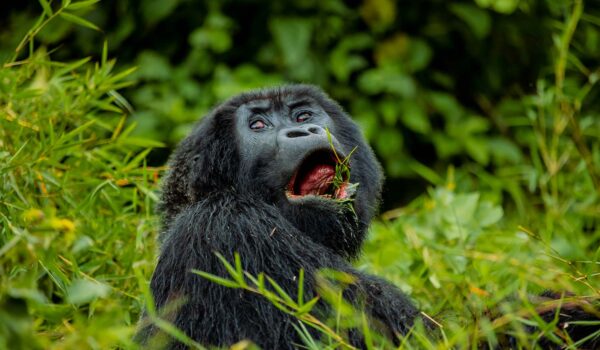Birds in Rwanda
Rwanda is an excellent bird-watching location, with over 700 species documented in an area smaller than Belgium. Rwanda has some of the greatest mountain birding on the continent. The 29 Albertine Rift endemics, all of which live in the high-altitude rainforest region in and around Nyungwe National Park, are particularly interesting. Volcanoes and Gishwati-Mukura National Parks also have a large number of them.
Bird species in Rwanda National parks include;
sunbird , Rockefeller’s sunbird , Ruwenzori apalis , Ruwenzori batis, Ruwenzori double-collared sunbird , Ruwenzori nightjar , Ruwenzori turaco , Schouteden’s swift, Strange weaver , Stripe-breasted tit , Willard’s sooty boubou , Yellow-eyed black flycatcher, Albertine boubou, Albertine owlet , Black-faced apalis , Blue-headed sunbird , Congo bay owl ,Dusky crimsonwing , Grauer’s swamp warbler , Grauer’s warbler, Handsome francolin, Kivu ground thrush , Kungwe apalis , Neumann’s warbler , Purple-breasted sunbird, Red-collared babbler , Red-faced woodland warbler , Red-throated alethe ,Regal.
Best time for bird watching Rwanda
Bird watching in Rwanda is best done all year round. The biggest population of bird’s species seen in the parks re the resident birds. Nyungwe is home to most of Rwanda’s unique species; birding is greatest from January to June, when most birds are loud. However, April is stormy, which might make logistics difficult. The dry season months, June to September, are easier since forest trails are drier and trekking is less strenuous. This is also the ideal period for gorilla trekking.
Rwanda best parks for Bird watching
Nyungwe forest and Akagera national parks are best safari destination for those looking for birding experience. Nyungwe has many Albertine Rift endemics and forest specials, while Akagera is rich in general savannah birds, including raptors and water-associated birds that you will be able to see around the lake shores.
Akagera National Park Birds
Akagera National Park provides excellent birdwatching opportunities. Of the 480 species documented, 100 birds are unique to this protected region. Akagera is Rwanda’s second most significant birding destination, behind Nyungwe National Park, and the two parks complement each other excellently; the majority of birds documented in Rwanda may be found in one of the parks. A boat journey on Lake Ihema is a necessity for both professional and casual birds. The highlight is a tiny island where hundreds of birds, including cormorants, darters, herons, ibises, and African openbills, congregate.
Best time for bird watching
Akagera National Park has abundant birds throughout the year. Each season brings a fresh set of bird species including the Francolins, numerous wetland birds, nightjars, and owls thrive during the dry season, which is seen from June to September. The wet season, around October, is ideal for lapwings and other open grassland species. Songbirds are most active between September and November, then again in March and April. Waterbirds that breed in colonies, such as cormorants, darters, herons, storks, and ibises, typically breed between February and July. Migratory birds are present from November to April.
Nyungwe forest National Park
Nyungwe National Park is a spectacular birding site. Casual birders will be astonished by the diversity of colorful species flying about, while serious birders will be able to tick off numerous lifers. It pays to inquire for an expert birding guide at the park’s headquarters, since they can identify many species over the phone. The many Albertine Rift endemics and birds found only in the highland forest environment are particularly interesting. Albertine owlet, red-collared babbler, and Rockefeller’s sunbird are three birds that have not been documented anywhere on the eastern side of the Albertine Rift.
Best Time for Birdwatching
Birding in Nyungwe is superb all year around. Because so much of forest birding relies on sounds, the ideal months are March through May, when birds are most noisy. From June to September, many birds nurse their fledglings and remain silent, until becoming vocally active in January or February. April is the wettest month, and birding logistics may be difficult since paths become quite slippery.

